The most common tool that over-the-cap teams use to sign free agents from other teams is the mid-level exception, but that’s not the only exception those clubs have to squeeze an extra player onto the payroll. The bi-annual exception is a way for a team to sign a player who may command more than the minimum salary, but less than the mid-level.
As its name suggests, the bi-annual exception can only be used every other season. Even if a team uses only a portion of the exception, it’s off-limits during the following league year.
During the 2020/21 league year, four teams – the Mavericks, Pistons, Grizzlies, and Raptors – were ineligible to use the bi-annual exception at all, since they used it in 2019/20.
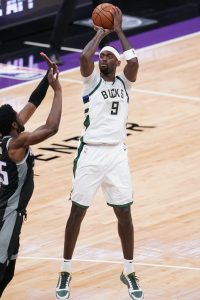 Three teams used the BAE in ’20/21, with the Bucks signing Bobby Portis, the Nuggets signing Facundo Campazzo, and the Lakers signing Wesley Matthews. Those three clubs won’t have the exception at their disposal during the 2021/22 league year.
Three teams used the BAE in ’20/21, with the Bucks signing Bobby Portis, the Nuggets signing Facundo Campazzo, and the Lakers signing Wesley Matthews. Those three clubs won’t have the exception at their disposal during the 2021/22 league year.
The bi-annual exception is available only to a limited number of clubs, even among those that didn’t use the exception during the previous season. Teams that create and use cap space forfeit the BAE, along with all but the smallest version of the mid-level (the room exception). Additionally, teams lose access to the bi-annual exception when they go over the “tax apron,” a figure approximately $6MM+ above the tax line. So, only teams over the cap and under the tax apron can use the BAE.
If a team uses all or part of the bi-annual exception, the tax apron becomes the club’s hard cap for that season. Teams that sign a player using the BAE can later go under the cap, but can’t go over the tax apron at any time during the season once the contract is signed.
[RELATED: NBA Teams With Hard Caps In 2020/21]
The bi-annual exception allowed for a starting salary of up to $3,623,000 in 2020/21. The starting salary for the BAE in 2021/22 projects to be worth $3,732,000.
Under the NBA’s previous Collective Bargaining Agreement, the value of each season’s bi-annual exception was determined in advance. However, under the current CBA, the value of the BAE in future league years is tied to salary cap increases or decreases. If the cap goes up by 5%, the value of the bi-annual exception will also increase by 5%.
A player who signs a contract using the bi-annual exception is eligible for a one- or two-year deal, with a 5% raise for the second season. For players who signed using the BAE in 2020/21, the maximum value of a two-year contract was $7,427,150.
Teams also have the option of splitting the bi-annual exception among multiple players, though that happens much less frequently than it does with the mid-level exception, since a split bi-annual deal may not even be worth more than a veteran’s minimum salary.
In a typical league year, the bi-annual exception starts to prorate on January 10, decreasing in value by 1/177th each day until the end of the regular season. Those numbers looked a little different in 2020/21 due to the revamped schedule, but should return to normal for ’21/22.
Note: This is a Hoops Rumors Glossary entry. Our glossary posts will explain specific rules relating to trades, free agency, or other aspects of the NBA’s Collective Bargaining Agreement. Larry Coon’s Salary Cap FAQ was used in the creation of this post.
Earlier versions of this post were published in previous years by Luke Adams and Chuck Myron.
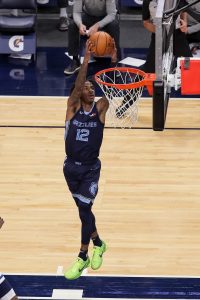 Some regression was expected in 2020/21, but no one told
Some regression was expected in 2020/21, but no one told 
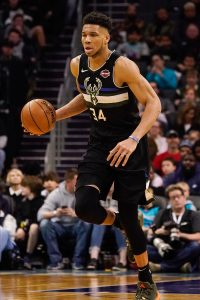
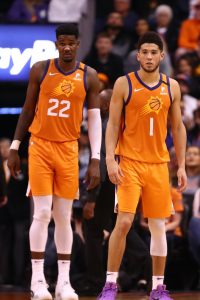 all series long by the likes of
all series long by the likes of 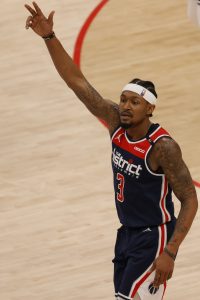 Still, with the Wizards out of the playoff – and play-in – picture in early April, it looked like it might just be a matter of time until the team had to start seriously considering major offseason changes to the roster, the coaching staff, and even the front office. But a 17-6 finish to the regular season and a win in their second play-in game gave the Wizards a glimmer of hope heading into the summer, even if their playoff run was short-lived.
Still, with the Wizards out of the playoff – and play-in – picture in early April, it looked like it might just be a matter of time until the team had to start seriously considering major offseason changes to the roster, the coaching staff, and even the front office. But a 17-6 finish to the regular season and a win in their second play-in game gave the Wizards a glimmer of hope heading into the summer, even if their playoff run was short-lived.
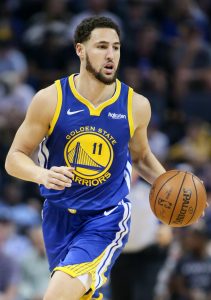 However, just hours before the 2020 draft got underway, word broke that
However, just hours before the 2020 draft got underway, word broke that 
 Teams can use their entire mid-level exception to sign one player. Several clubs went this route in 2020/21, including the Celtics (
Teams can use their entire mid-level exception to sign one player. Several clubs went this route in 2020/21, including the Celtics ( There was optimism entering the season that new head coach Nate Bjorkgren and two-time All-Star
There was optimism entering the season that new head coach Nate Bjorkgren and two-time All-Star 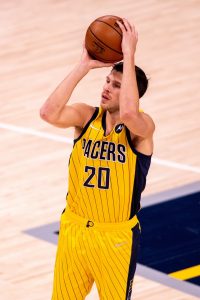
 San Antonio’s struggles can be traced back to an inability to maximize the return for All-NBA forward
San Antonio’s struggles can be traced back to an inability to maximize the return for All-NBA forward 
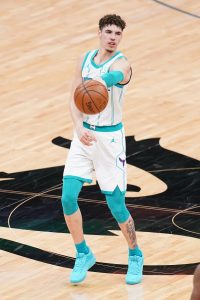 The Hornets didn’t snap their playoff drought in 2021, but a year later, their outlook is considerably brighter. That turnaround can be attributed in large part to nailing the No. 3 pick in the 2020 draft.
The Hornets didn’t snap their playoff drought in 2021, but a year later, their outlook is considerably brighter. That turnaround can be attributed in large part to nailing the No. 3 pick in the 2020 draft. 